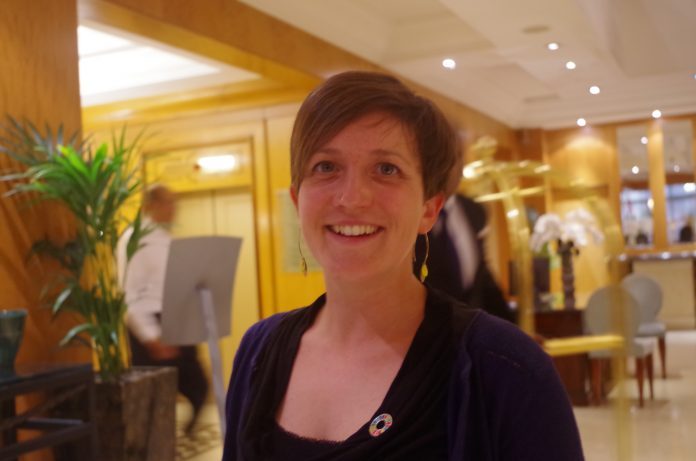Manual sea lice counts are costing the industry millions. CEO Flavie Gohin says that her machine learning 360 camera can change that.
At the Aquaculture Innovation conference at the Millennium Gloucester Hotel, London, CEO Flavie Gohin explained how her start-up Fishency Innovation could change the way sea lice are counted.
Welfare issue
“Sea lice is a major fish welfare issue – and this has a negative impact on the farmed and wild salmon. It prevents the aquaculture industry from sustainable growth. Key to controlling sea lice starts with proper monitoring. This starts with proper controlling, we thought we really need to provide to the industry a reliable solution to monitor with precision sea lice level in the cage on a daily basis. Today sea lice are counted manually over a sample of 20 fish weekly. This manual counting process results in access to poor data and unreliable decision support for treatment and fish welfare issue,” explained Gohin.

The startup is one of 10 companies working on digital sea lice companies right now in Norway. Fishency say they are the only one coming to the market early next year with a system providing a 360 degree view of the fish in cages so sea lice and other fish health indicators can be spotted on the whole surface of the fish.
Formed in 2017 through the X2 Labs Blue Revolution program, Fishency is now being tested it two full scale tests – to be ready for a commercial release by March 2020.
“We developed our own hardware focusing on the cost – and then we are developing the machine learning algorithm (software),” explained engineer Gohin.

The team created the SmartFunnel which is a specially designed piece of hardware which contains a camera system and other (for now secret) technologies.
360-degree photos
The hardware is installed into each cage, that can take 360-degree photos of the fish as they swim through the funnel passively. These images are then stored, transferred and the images processed using bespoke software which identifies the sea lice. The result is an automated report, sent to the fish farmers daily via email, giving them, Fishency Innovation claim, easy access to better data. “More information will be extracted from these images in the near future, like biomass measurement and other fish health indicators,” she said.
Gohin, who comes from an oil and gas background and moved to Norway from France a few years ago, said that she initially did not know much about aquaculture. But since she has subsequently dived in and become much more familiar with the issues of the industry. During the first months of the company, she just talked to people in the industry: “We didn’t develop anything, we just went to salmon farmers asking them ‘what do you want?’ and ‘what solutions are you looking for?’.”
Labour-intensive manual counting method
Despite the industry being tech-driven, the labour-intensive manual counting method is still the main way that sea lice are counted. 10 to 20 fish being removed temporarily from the cages each week, sedated and closely inspected for lice. With 5,000 cages across Norway and at least 200 fish farms in Scotland, the toll of man-hours costs the industry dear.
“It’s not good for the fish, it’s time-consuming and you get extremely poor data,” she said explaining that the lack of data meant that farmers may be treating fish more than they should. “The plan is to have access to better data so that they can make the right decision.”

Guess work
“The salmon farmers don’t want to guess which is on the other side of the fish,” said Gohin. “They want to see the whole salmon and we have pictures and videos of fish swimming nine metres deep. When one fish heath manager saw the images, she was very excited as this is the first time she could see her fish swimming at 9m deep in the cage with a really clear shot.”
At the conferance and beyond, Fishency received strong interest from several salmon farmers for testing and fish health companies. “We are also a good partner for R&D projects in the industry as we focus on the quality and reliability of our data but also on user-friendliness and low cost.”
Gohin concluded they are now working on the next fundraising planned for the winter. “We are looking for strong partners who know about the industry and have an international network”.

